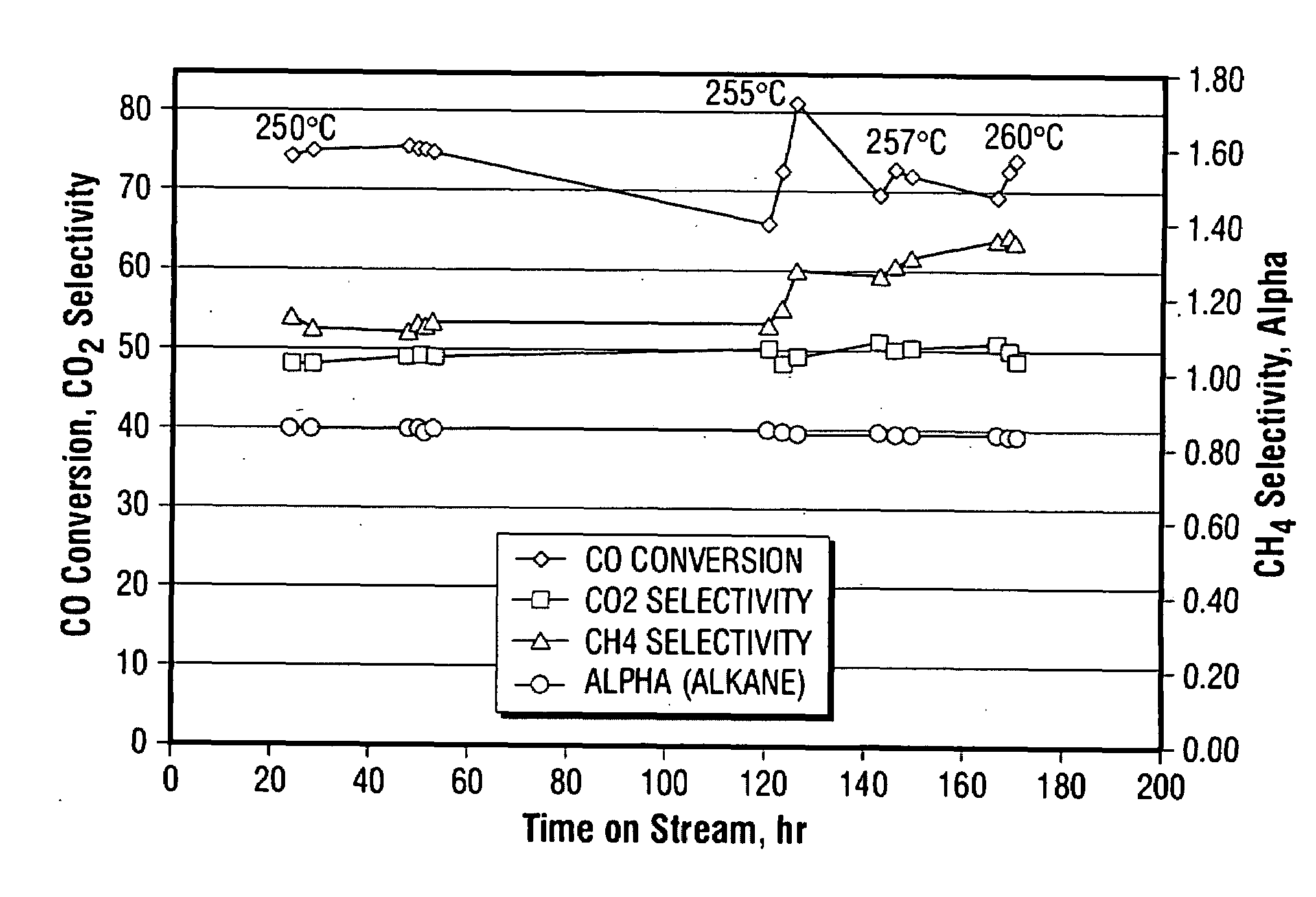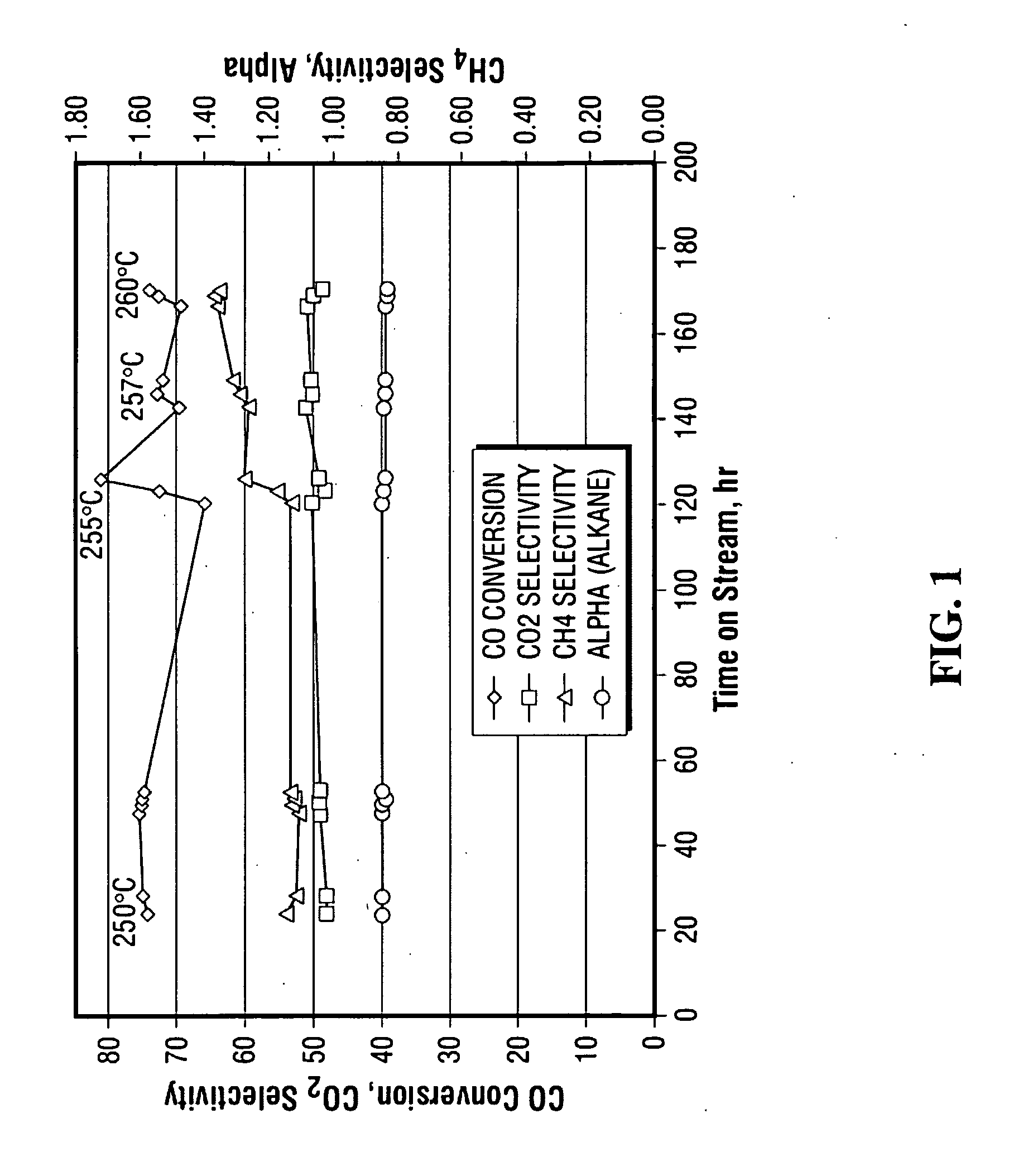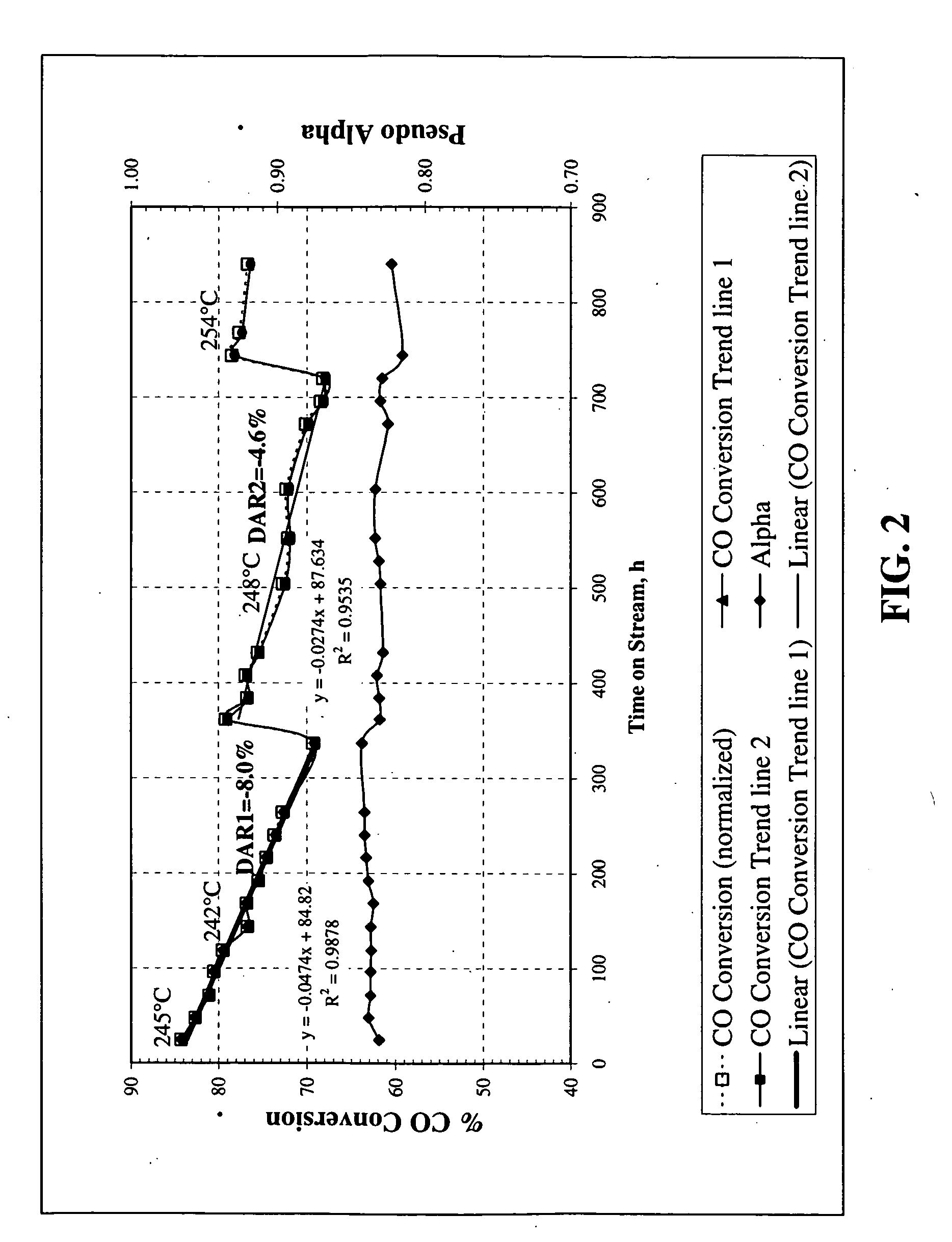Strengthened iron catalyst for slurry reactors
- Summary
- Abstract
- Description
- Claims
- Application Information
AI Technical Summary
Benefits of technology
Problems solved by technology
Method used
Image
Examples
example 1
Potassium Silicate Binder Added to Conventional Precipitated Unsupported Catalyst
[0100]A raw unsupported precipitated iron catalyst promoted with copper and potassium was prepared according to the description in U.S. Pat. No. 5,504,118 and U.S. Provisional Patent No. 60 / 955,142. The raw catalyst was made using elemental iron and copper as starting materials.
[0101]The first step in the preparation of the raw catalyst was dissolution of the metals in nitric acid to form a mixture of ferrous nitrate, ferric nitrate and cupric nitrate in appropriate proportions. The ratio of water to acid in an important parameter and may be adjusted to give a weight ratio of about 6:1. The dissolution of the metals in nitric acid is accompanied by evolution of nitrogen oxides, principally nitric oxide and nitrogen dioxide. Nitric oxide has limited solubility in the acid, but it can be readily oxidized to nitrogen dioxide by contact with air or oxygen. Nitrogen dioxide dissolves in water producing nitri...
example 1a
Preparation of RSC-BD-18: Fe / Cu / K / SiO2:100 / 1 / 2.09 / 3.3 by wt.
[0106]In step (1), 5.6 g of potassium silicate (SiO2 / K2O=2.5 by wt, 20.8% SiO2 and 8.3% K2O) was diluted with 7.1 g of DI water.
[0107]In step (2), 50.0 g of precipitated iron catalyst prepared using the method of U.S. Pat. No. 5,504,118 and U.S. Provisional Patent No. 60 / 955,142, was impregnated by mixing thoroughly with 12.7 g of aqueous solution of potassium silicate prepared in step 1.
[0108]In step (3), the material obtained in step 2 was first heated to 125° C. at the rate of 2° C. / min, and held at this temperature for 12 h, and then ramped to 350° C. at the rate of 11 / min, and calcined at this temperature for 16 h. (It is noted that this catalyst could also have been prepared by adding potassium silicate to precipitate prior to spray drying.) In step 2, the catalyst was spray dried and calcined prior to the addition of solution from (1).
example 1b
Preparation of RSC-BD-19: Fe / Cu / K / SiO2:100 / 1 / 3.55 / 6.69 by wt.
[0109]In step (1), 8.8 g of potassium silicate (SiO2 / K2O=2.1 by wt, 26.5% SiO2 and 12.2% K2O) was diluted with 3.9 g of DI water.
[0110]In step (2), 50.0 g of precipitated iron catalyst prepared as described in U.S. Pat. No. 5,504,118 and U.S. Provisional Patent No. 60 / 955,142 was impregnated by mixing thoroughly with 12.7 g of aqueous solution of potassium silicate prepared in step 1.
[0111]In step (3), the material obtained in step 2 was first heated to 125° C. at the rate of 2° C. / min, and held at this temperature for 12 h, and then ramped to 350° C. at the rate of 11 / min, and calcined at this temperature for 16 h. (It is noted that this catalyst could also have been prepared by adding potassium silicate to the precipitate prior to spray drying.)
PUM
| Property | Measurement | Unit |
|---|---|---|
| Fraction | aaaaa | aaaaa |
| Fraction | aaaaa | aaaaa |
| Weight | aaaaa | aaaaa |
Abstract
Description
Claims
Application Information
 Login to View More
Login to View More - R&D
- Intellectual Property
- Life Sciences
- Materials
- Tech Scout
- Unparalleled Data Quality
- Higher Quality Content
- 60% Fewer Hallucinations
Browse by: Latest US Patents, China's latest patents, Technical Efficacy Thesaurus, Application Domain, Technology Topic, Popular Technical Reports.
© 2025 PatSnap. All rights reserved.Legal|Privacy policy|Modern Slavery Act Transparency Statement|Sitemap|About US| Contact US: help@patsnap.com



